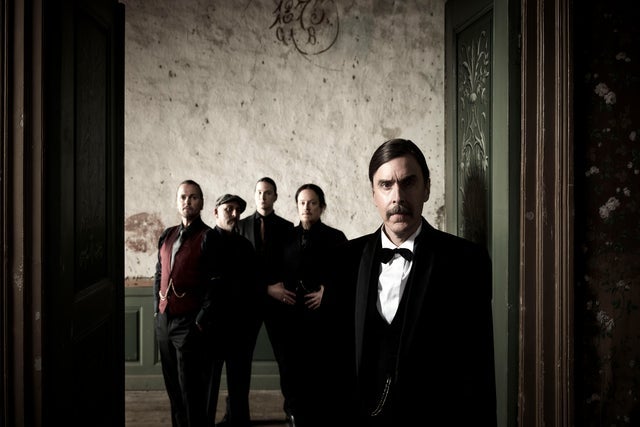From death growls to vintage keys
Opeth emerged from Stockholm's early '90s metal scene, evolving from death-metal grit into ornate progressive rock under
Mikael Akerfeldt's patient lead. In the last decade they moved away from harsh vocals on record, while still revisiting growl-era material live, a shift that shapes the arc of a night.
What might make the cut tonight
Expect a balanced set that might anchor on
Ghost of Perdition,
Sorceress,
The Drapery Falls, and
Blackwater Park, threaded with newer epics from
In Cauda Venenum. Crowds mix prog lifers comparing riff ideas, newer heavy-music fans leaning in for the loud drops, and players clocking the rhythm section's choices. Deep-cut trivia:
Deliverance and
Damnation were tracked in the same sessions, and
Steven Wilson helped form the atmosphere around
Blackwater Park. Another small quirk: they often place a calm piece mid-set to clear the palette before a long closer. Nothing here is locked in; song picks and production cues are reasoned forecasts, not confirmed plans.
The Opeth Microcosm
What fans wear and share
You will see black tour long-sleeves next to faded
King Crimson and
Camel shirts, plus a few patches from
Morbid Angel for the old-school heavy link. People tend to watch closely during quiet pieces like
Windowpane, then head-nod in unison when the big riffs arrive, a calm-to-surge habit the band encourages.
Rituals between the notes
Between songs,
Mikael Akerfeldt often drops dry one-liners that reset the mood without breaking the spell, and the room laughs more than it shouts. A common shout is a good-natured request for
Black Rose Immortal, which he deflects with a grin before the next deep cut. Merch skews toward detailed poster art, woodcut owls, and long-sleeve prints, plus vinyl reissues that sell fast to collectors. Conversations drift to favorite eras, but fans who prefer the growl years and those who favor the prog side usually stand shoulder to shoulder without fuss.
The Clockwork Inside Opeth
Weight, space, and slow-burn drama
Mikael Akerfeldt's clean voice sits warm and steady, with growls used as color rather than constant, so the drama comes from contrast instead of volume.
Fredrik Akesson carries many of the high leads while
Mikael Akerfeldt locks the riffs, and the two trade phrases so themes feel conversational.
Martin Mendez keeps a round, woody bass tone that fills space without crowding the guitars, often nudging songs forward when the tempo drops.
Joakim Svalberg leans on Mellotron-style pads and bright piano, giving older material a vintage hue that softens the edges in a good way.
Subtle tweaks fans notice
Many classics sit a whole step down, so the guitars in D standard sound heavier yet remain clear, and that lets the kick drum and bass pop through. Live, the band often stretches the syncopated finale of
Deliverance by a few cycles, turning the off-kilter hits into a call-and-response with the room. Lighting tends to favor amber and forest-green washes with gentle haze, an approach that frames the music rather than chasing it.
If You Like Opeth: Nearby Constellations
Prog cousins and metal neighbors
Fans of
Porcupine Tree will recognize the long builds, layered guitars, and patient payoffs that
Opeth also favors.
Steven Wilson is a natural overlap thanks to shared studio history and the same love of vintage keyboards and analog warmth.
Why these shows feel adjacent
If your playlist runs through
Katatonia, the moody harmonies and storm-to-calm dynamics will feel familiar even when the tempos differ.
Tool shares the slow tension, odd-feeling grooves, and deep-pocket drumming that make long songs feel short. For a heavier edge with similar focus on texture over speed,
Gojira lands close, especially in how both bands let riffs breathe. These artists also draw polite, listening-forward crowds who still surge when the beat drops, making the room feel tuned to the same wavelength. Pick any of them and you will hear that balance of weight, melody, and patient storytelling that anchors
Opeth's appeal.


